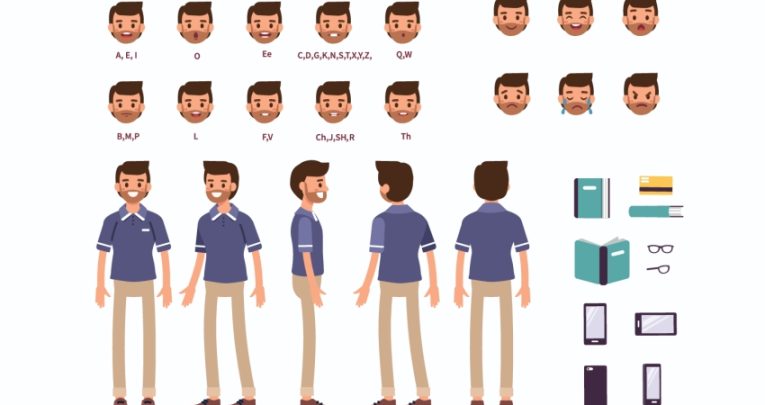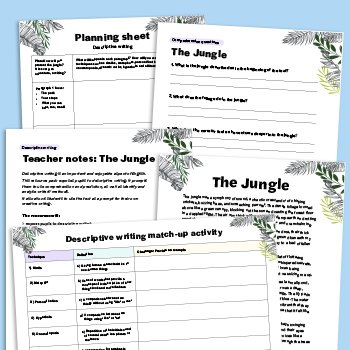Creative writing – What it takes to craft memorable characters

Your KS3 students are more than capable of creating original, distinctive characters of their own and bringing them to life, says Martin Ferguson…

Studying characters can be a hugely rewarding experience, in that it helps us better understand the human experience. In order to study character and ultimately create their own, however, students need to first read a range of characters and relatable pieces of literature.
When they reach Y8, students at Ashfield Girls’ High School will spend time reading assorted prose, poetry and drama all based on the theme of childhood. When we arrive at characterisation and the creation of original characters, the process can often begin with a conversation that goes like this:
Student: Mr Ferguson, can your character be a single cat lady?
Me: Would this make the character interesting? Is she a cat lady for any particular reason?
Student: Well, she would be lookin’ for someone to love her, or maybe just a friend, because cats aren’t good as friends. They’re very selfish, you know…
Me: I didn’t know that about cats. Okay, so your cat lady isn’t selfish then? What does selfish mean? Is she the opposite of the cats living with her? Grab the thesaurus and look up other words for selfish – you might get some ideas from that. I’ll come back to you in a little bit…
They always manage to dig out clichéd characters – perhaps a variation of an existing character from The Simpsons, or one copied from a popular (often Marvel-based) movie. Sometimes they’ll try and shock us with outré ideas, or see how ridiculous they can be. This is always fun at the start, but can be shaped into an opportunity or springboard for more thoughtful character writing once they’re steered in the right direction.
My favourite Seamus Heaney quote (and our departmental motto) is ‘If you have the words, there’s always a chance you’ll find the way’. In the spirit of these wise and timeless words, we’ll always try and begin with words and meanings when introducing new concepts.
We’ll then help students find their way with a good example and the essential clear success criterion – plus the odd scaffold and model for good measure.
I try to use examples that students can relate to, such as characters from popular books, TV shows and movies. Having established what they know about the word ‘character’, we’ll then gather some ideas on the board.
One way of helping students understand what characterisation is, and why it matters, is to draw comparisons with getting to know someone in real life. Just as we all form opinions about people based on their actions, appearance and personality, we’ll similarly form opinions about fictional characters based on the same criteria.
Traits and attractions
An effective character creation strategy can be to have your students create their own characters after they’ve written about others using a stimulus. This can be a fun and engaging way of getting them to think about what makes a character unique and interesting.
I’ll usually present the class with a brief sample of writing relating to a familiar character from popular fiction (though I may sometimes throw in a Dickensian character, such as Mr. Creakle, depending on the cohort). Roald Dahl is where we’ll usually go when starting out.
I’ll then ask my students to think about what makes the character in question so compelling. Take, for example, Hermione Granger from the Harry Potter series. Is it her intelligence? Her bravery? Or her loyalty to her friends? Once your students have identified these traits, ask them to find specific examples from the relevant text that demonstrate them.
To illustrate the point further, have your students brainstorm a list of adjectives that can usefully describe a famous fictional character, such as Harry Potter himself or Katniss Everdeen, from a provided extract. Then ask them to justify their choice of adjectives using evidence from the text. If a student describes Harry Potter as being ‘brave’, they could point to his willingness to confront Voldemort despite overwhelming odds.
This can then lead to a comparatively untapped resource for studying and writing about characters – namely the use of comparatives…
Trending
Sharing and comparing
Comparatives are very powerful accessibility aids for students, but can also generate engaging discussions around vocabulary, prompting look-ups of synonyms, antonyms and more obscure terms requiring some dictionary or thesauri work.
Again, the aim here is to create an awareness of how important vocabulary is, and how it can help us create a class-agreed word bank – or even better, encourage ‘rich talk’ in the class beyond ‘happy’, ‘sad’, ‘good’ and ‘bad.’ We actually have a poster on the wall that specifically bans the use of these words and suggests alternatives – mainly for my own sanity!
Using a Venn diagram or other visual comparison tool, select two original characters created by members of the class, or two from popular children’s fiction that the class will be familiar with. If you have some artists in the class, their talents can potentially enrich this exercise even further, while giving them a chance to express themselves. Most of my juniors are into comic novels and drawing styles, which can make for excellent visualiser resources.
I’ll then assemble a loose display of various characters at the front of the class, which we can then match up and sort into a range of different groups and categories – ‘villains’, ‘heroes’, ‘romances’, ‘break-ups’, ‘origin stories’ and so forth.
One thing to avoid, however, are examples that are too simplistic or clichéd. If you start talking about the ‘damsel in distress’ or ‘evil stepmother’, you’ll likely be met with some eyerolls and groans from your students. Instead, try to find examples that are more nuanced and complex, such as characters who have both positive and negative traits.
Make mistakes
Lastly, don’t be afraid to inject a bit of humour into your lessons – perhaps through the use of silly voices, or impersonations of popular film/TV characters.
You could even turn the process of characterisation itself into a game, such as ‘Guess the Character’, by providing your students with a set of clues from which they have to guess a mystery character you’ve chosen. Try getting them more involved by inviting them to submit their own character suggestions and drawing them out of a hat. Any thespians in the class will love this…
In conclusion, teaching characterisation to KS3 students can be a lot of fun – especially if you’re willing to use some humour and creativity, be it a mixture of illustrations or writing.
By avoiding the dry academic jargon, using relatable examples and encouraging your students to create their own characters, you can inspire a love of literature and storytelling.
And remember – the class before you will be full of characters too. Enjoy working with them and write along with them, because those GCSE and A level exams come along quickly. For now, let their writing breathe. Let them make mistakes, and let them craft, draft, edit and work. Linger for longer, and watch their ideas grow.
Character studies
- To illustrate the dangers of relying on stereotypes, have your students analyse a character who is a stereotype, such as the ‘jock’ or the ‘nerdy scientist’. Then challenge them to come up with ways of subverting the stereotypes in question, and creating more complex, interesting characters.
- Provide students with a set of prompts, such as ‘What is your character’s greatest fear?’ or ‘What is their worst/best trait?’ and then task them with creating a short story or sketch featuring said character
- Create a ‘character autopsy’, whereby students label a blank outline of a person by adding their own choice of features
Martin Ferguson is head of English at Ashfield Girls’ High School in Belfast; his book, See One Do One Teach One: 12 Lessons for GCSE English, is available now (£16, John Catt)











